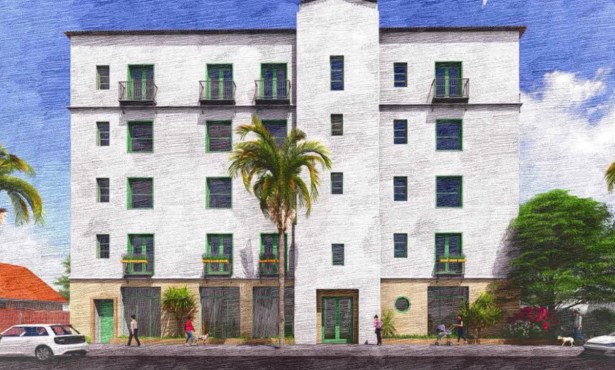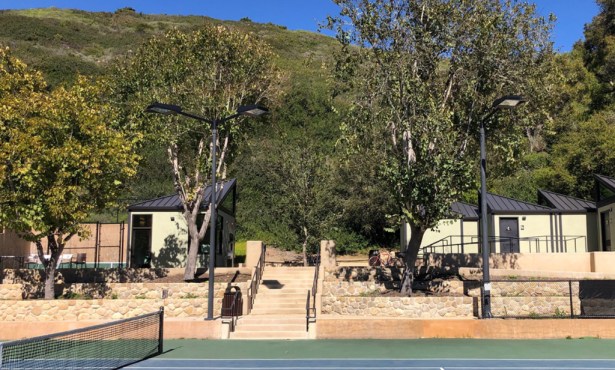Endangered Species: The S.B. Renter?
Preservation with Carrots and Sticks
by Nick Welsh
About two months ago, the Santa Barbara City Council approved
the demolition of a worn-out 10-unit apartment complex on North La
Cumbre Road — over the tearful objections of the tenants — to make
way for a cluster of well-designed new condos. Most of the
councilmembers were convinced they had no other choice. And many
haven’t stopped feeling bad about it since. In hopes of securing a
wider range of policy choices for the next time they confront an
apartment tear-down, on Tuesday the City Council, along with
members of the city’s Planning Commission, convened a special
three-hour meeting. On the table was a Chinese menu of options
designed to protect Santa Barbara’s existing supply of rental
housing from what affordable housing advocate Mickey Flacks
referred to as the “condomification” of Santa Barbara.
While there was no shortage of consensus that something must be
done, there was disagreement between some housing advocates — like
Flacks — and certain councilmembers — like Iya Falcone — over which
is more effective, the carrot or the stick, in dealing with
landlords and private developers. “Keep in the forefront of your
mind the carrot,” Falcone said, urging her colleagues to focus on
incentives, rather than restrictions. In response, Flacks shot
back, “I think we’re at the point where all the carrots are being
eaten up.” Flacks urged the two political bodies — one elected, the
other appointed — to require property owners who demolish rental
housing to build condos to pay offsetting “in-lieu” fees so
expensive that “they act as a deterrent to condo conversion.” And
like many affordable housing advocates, Flacks urged the two bodies
to clamp down on condo conversions. Currently, property owners
building 10 units or more are required to ensure that a certain
percentage are affordable. The threshold, she said, should be
reduced to as low as four. Even more radical in his remarks was
former councilmember David Landecker, now the president of the
Citizens Planning Association. Landecker expressed skepticism about
in-lieu fees, no matter how high, saying they were rarely enough to
do any good. Instead, he urged the council to change the zoning
rules to discourage the construction of market-rate housing and to
encourage affordable housing.
Councilmember Das Williams expressed great enthusiasm for
imposing new development fees — up to $25 a square foot — for new
residential construction, the proceeds of which could be directed
toward affordable housing. Planning Commissioner Bill Mahan
suggested another source of revenue, urging City Hall to ask voters
to approve an increase in the real estate transfer tax. If real
estate agents get their cut from real estate sales, he said, so
should the City of Santa Barbara. “Right now that fee is so small
that nobody knows how much it is,” he said.
Councilmember Brian Barnwell cautioned, “We can’t build housing
for everybody.” He argued that Santa Barbara’s exorbitant land
prices drive the cost of housing, and pointed out that the cheapest
land in Santa Barbara could be found in neighborhoods zoned for
industrial uses. If developers agreed to build affordable housing
there, Barnwell suggested that City Hall might allow residential
development — normally off-limits in industrial zones — to take
place.
Councilmember Helene Schneider said a greater appreciation of
rental economics might help the council devise programs to
encourage developers to build apartments. “I don’t know what they
mean when they say, ‘It doesn’t pencil out.’ Is it they can make
more elsewhere, or that they actually lose money?” Craig Zimmerman
of the Towbes Group responded that rents in Santa Barbara have
remained fairly level while construction costs — as well as the
price of land — have skyrocketed.
Part of the conundrum facing these politicians is which actions
to take now and which to delay until the general plan update
process begins next year. Barnwell argued that many of the actions
contemplated Tuesday should be incorporated into an overall
planning scheme. Flacks countered that if the council waits much
longer to act, “There won’t be anything left to save.” In the
meantime, Planning Commissioner John Jostes said the council and
the planners already have several tools at their disposal that
remain inadequately deployed. First, he said, don’t grant
discretionary bonus densities to huge condos with 2,200-square-foot
bedrooms. Secondly, he said, environmental law already gives
decision-makers considerable discretionary authority to deny
special breaks and modifications to projects — and
developers — that don’t meet the community’s obvious need for
affordable rental housing. No actual decisions were made Tuesday,
and it remains to be seen what — if any — new initiatives are
actually pursued.


